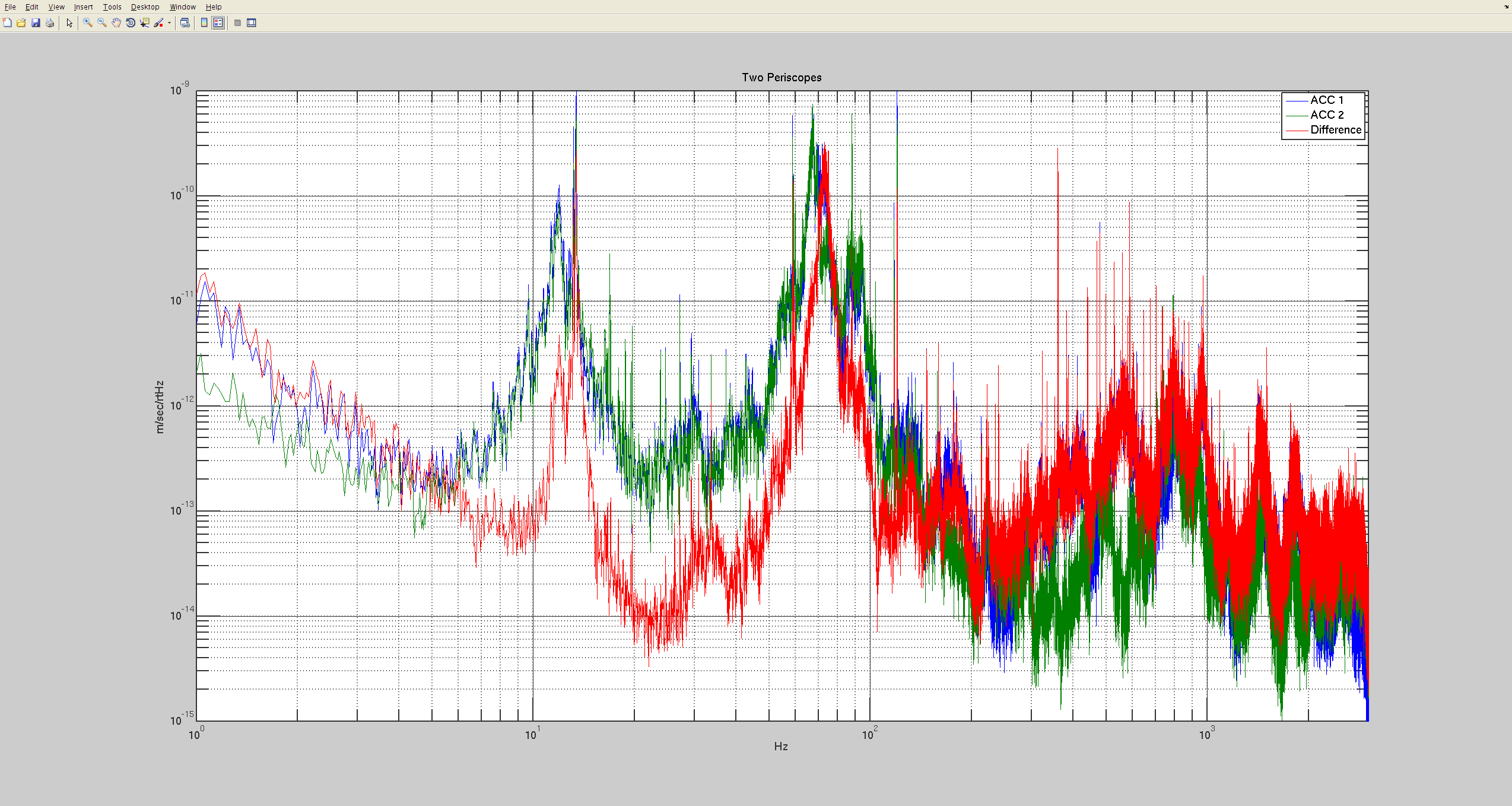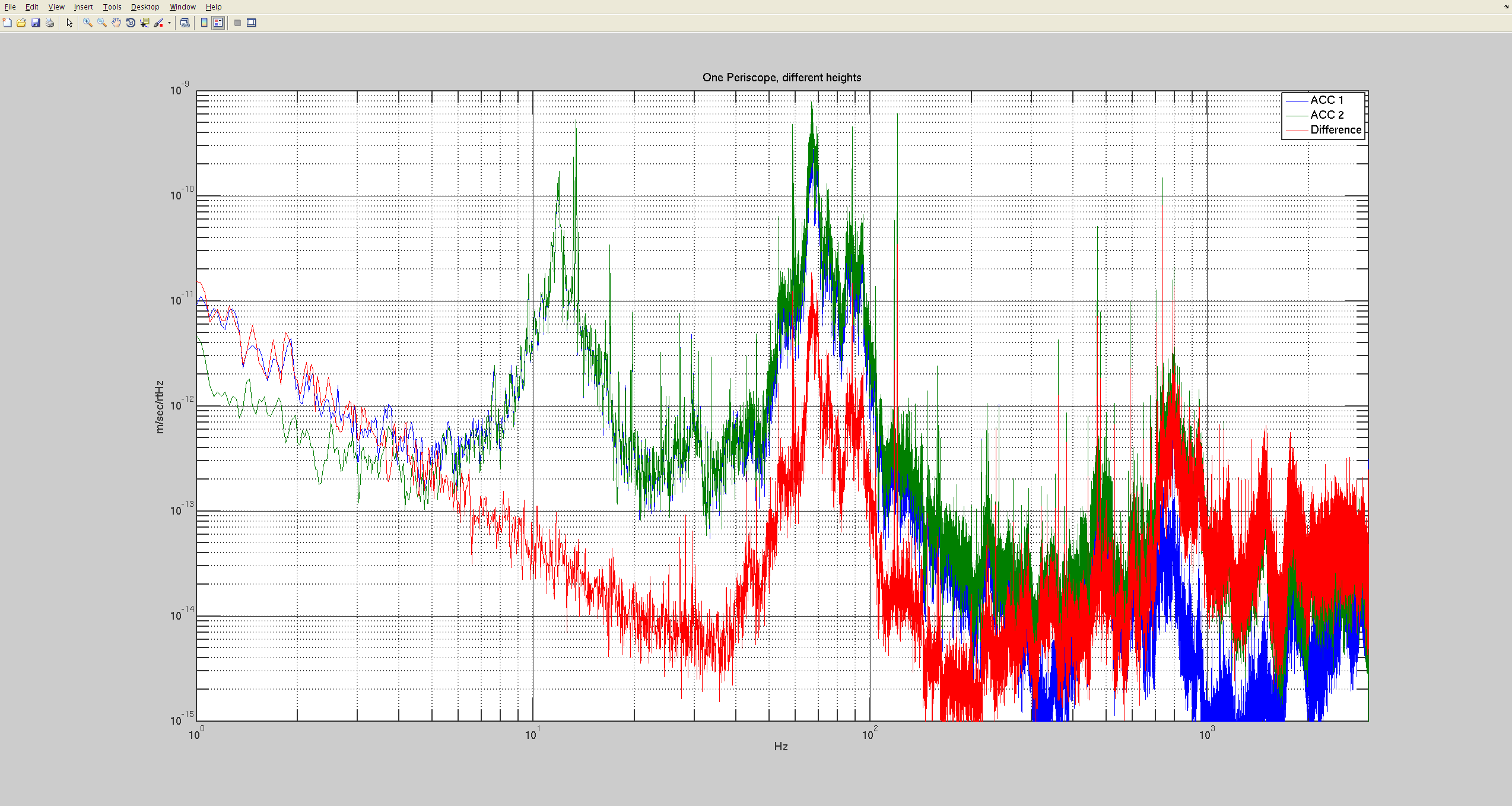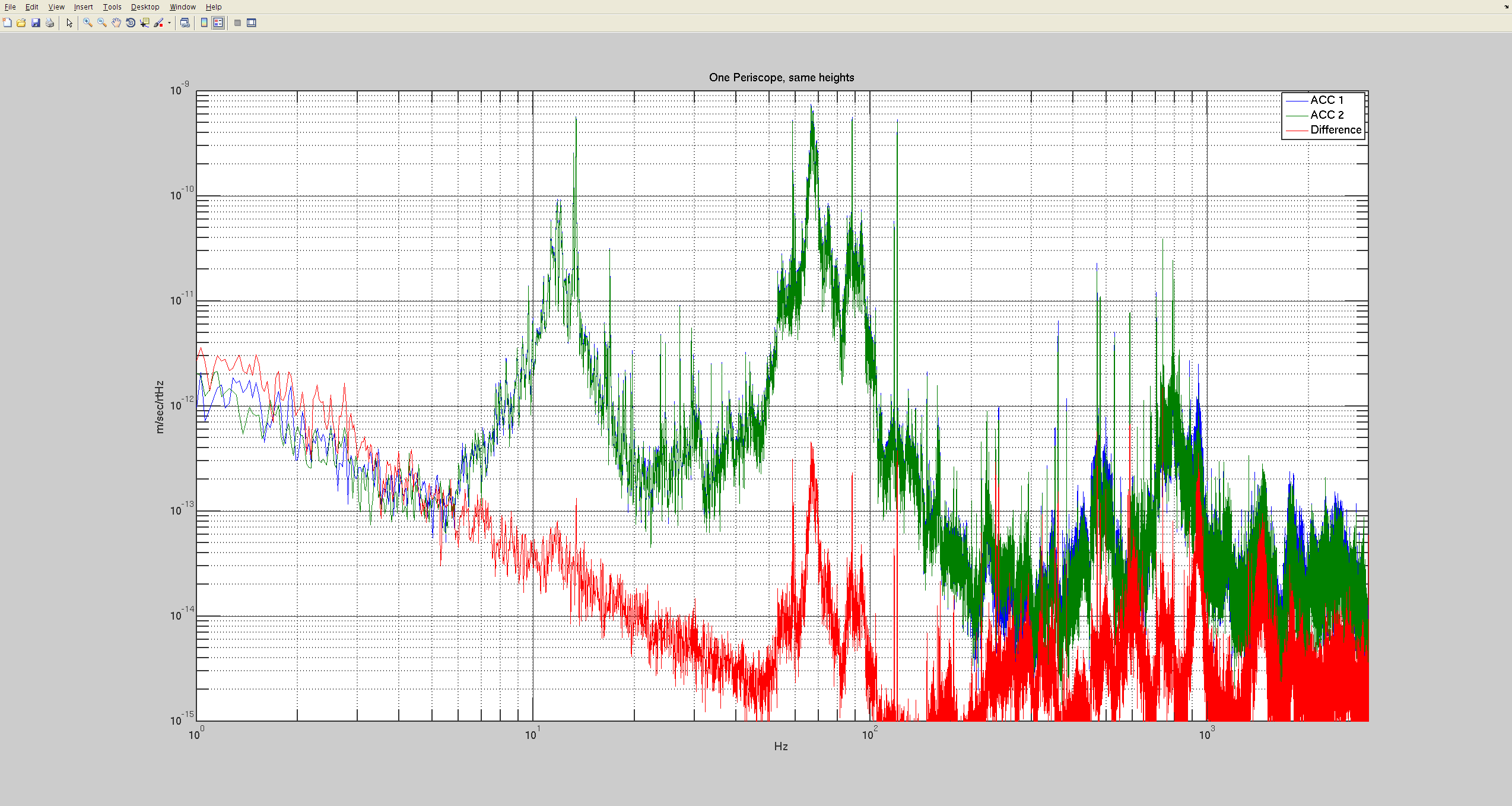Terra Hardwick, Vinny Roma, Robert, Stefan)
We hat 2 accelerometers mounted on the two pryramid-shaped periscopes on ISCT1 that are in the ALS beam path.
Below are plots of the velocity spectra for each accelerometer, as well as for the difference. No separate calibration was applied - we simply took the difference of the raw data. However, as can be seen from plot 3, the two accelerometers seem to be matched to better than 1%.
Plot 1 shows the of periscope 1 vs periscope 2 spectra. Note that the highest peak is just below 70Hz, but common in both periscopes - the two periscopes seem to be locked together. The peak just above 70Hz however is the dominant one in the difference spectrum. It is also the one that shows up in the HIFOY spectra.

Plot 2 shows the two accelerometers mounted on the same periscope (the middle one that carries the green beam from x and y arm). The accelerometers were mounted at a slightly different height, about a 3 inch appart, corresponding to a setup with different mirrors mounted on top of the periscope. Note that we get about a factor of 10 suppression.

Plot 3 again has both accelerometers mounted on the middle periscope, but at the same height, i.e. simulating a situation with all three beams hitting the same top periscope mirror. The suppression factor is now too good to believe. This suggests that if possible, using the same top mirror for all 3 beams would be beneficial.

One warning about the accelerometer mounting: they were attached directly to the periscope. having two different mirror mounts can make the situation slightly worse. This again would suggest that using a single top mirror would help.
All plorts are calibrated in m/sec/rtHz.











